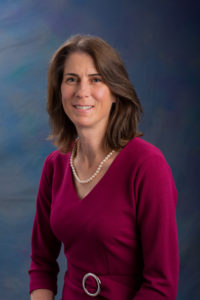- About
- Members
- Sponsors
- Subcommittees
- Technical Documents
- News
- Events
- Spotlight ATSC 3.0
- Contact Us
- Member Login
- Member Meetings
- Advanced Search
Search Site
Member Links
- About
- Members
- Sponsors
- Subcommittees
- Technical Documents
- News
- Events
- Spotlight ATSC 3.0
- Contact Us
- Member Login
- Member Meetings
- Advanced Search
President’s Memo: The Power of Convergence & Harmonization
Posted on October 10, 2021 in ATSC News
A month ago, many of us expected to be headed to Las Vegas for the NAB Show this week. As much as we’ll miss seeing you there, ATSC supports NAB’s difficult decision to cancel the show. Together with NAB and all our industry colleagues, we’re looking ahead to the 2022 show next April. We are excited by NAB’s announcement that the rich slate of papers and presentations originally scheduled for the 2021 Broadcast Engineering & IT Conference will go ahead as virtual sessions. This material is relevant now, and I hope to “see” you all there.
Optimizing Spectrum Use
ATSC is pleased to announce the formation of a new technical group, the TG3-11 ad hoc group on ATSC 3.0 / 5G Harmonization, which will be chaired by Anders Askerup of Hewlett Packard Enterprise. ATSC appreciates his leadership for this important initiative and thanks Marc Mouradian, also of HP Enterprise, who will serve as the new group’s Secretary.
Spectrum is a precious and limited resource. While we can’t create new spectrum, we can explore new ways to optimize the efficiency of its use. With data demands growing steadily year over year, the pressure is on to use it as wisely and efficiently as possible. Choosing the best data delivery network for a given use case at a given time is one way of optimizing this limited resource.
Studying Convergence Options
Many usage scenarios can be seen as sitting squarely in the “sweet spot” for broadcast data delivery, like when large amounts of data need to reach many receiver units. The one-to-many nature inherent in broadcast networks can be the most efficient solution in these cases, but there is also the need to easily select and use the best network for each given scenario, and technical solutions are needed to allow data to seamlessly flow across heterogeneous networks.
TG3-11 has been tasked by its parent group, Technology Group 3, to study and document technical options for convergence between ATSC 3.0 and 5G in light of existing specifications developed in 3GPP for 5G. There are a number of noteworthy projects underway around the world that are studying this topic, including the Humber College B2C Lab, which will explore “both television and non-television applications including converged, hybrid 3.0/5G architectures, and SKT’s recent demonstration of “next-generation 5G-ATSC3.0 convergence broadcasting service” on Jeju Island in South Korea.
Get Involved!
TG3-11 will now provide a forum for ATSC members to explore the possible designs for heterogeneous network architectures even as development is underway in labs across the globe. For our ATSC members that are interested in joining the group, I know that Anders and Marc are anxious to start a meeting cadence and make progress on this exciting project. You may go into Kavi and join TG3-11 now!
Q4 Conferences
We are also entering a very busy fourth-quarter conference season. I will be sharing the progress of ATSC 3.0 at Western Association of Broadcast Engineers (WABE), CABSAT, HbbTV, Webit Global Impact Week and more between now and December. Should protocols permit, I will also plan to represent ATSC at IBC in early December in Amsterdam. I hope you might be able to join some of these conferences – it will be nice to see familiar faces and partners!
Madeleine Noland, ATSC President
Posted in ATSC News
News Categories
News Archives
Subscribe
Subscribe to The Standard, our monthly newsletter. Learn More
Join ATSC
ATSC is a membership organization with both voting and observer categories. Voting members include corporations, nonprofit organizations, and government entities, and they participate actively in the work of ATSC. Observers are individuals or entities not eligible to be a voting member.
Subscribe to our Newsletter
Subscribe to The Standard, our monthly newsletter, to stay up-to-date with ATSC news and events around the world.
Site Links
Contact Us
Advanced Television Systems Committee, Inc.
1300 I Street NW, Suite 400E
Washington, DC 20005
Do you have questions about ATSC?
About ATSC
The Advanced Television Systems Committee, Inc., is an international, non-profit organization developing voluntary standards and recommended practices for digital terrestrial broadcasting. ATSC member organizations represent the broadcast, broadcast equipment, motion picture, consumer electronics, computer, cable, satellite, and semiconductor industries. ATSC also develops digital terrestrial broadcasting implementation strategies and supports educational activities on ATSC standards.
© 2025 ATSC





































